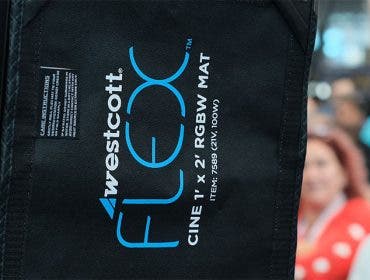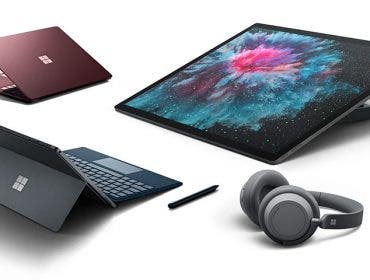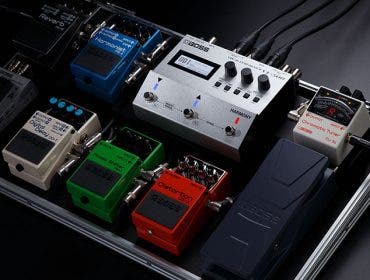The Flashpoint XPLOR 600PRO TTL transcends the old adage, “fast, inexpensive and good — you can pick just two.” With super fast recycle times, and clean, color stable output, the Pro presents a tremendous value, standing shoulder to shoulder — and often pulling away from — more expensive alternatives.
Coverage, distance, and tempo:
An inescapable truth of strobe lighting: as the maximum output power of the light increases — measured in watt seconds — so do your creative opportunities. It is certainly possible to create great work with relatively low output lighting, but a strobe with greater watt-seconds can relieve the process of friction and expand creative potential.
For this reason I will often think of my lights using a rigorous baseline, and it goes like this: at what point in this light’s power settings can I arrive at a sweet spot between output and recycle time? Both factors strain a strobe’s capacity, pulling it in opposite directions. Too little output power and I won’t be able to get sufficient critical front-to-back depth of focus, or work at sufficiently clean ISO; but as I raise power, slower recycle times might trip up the otherwise natural cadence of a shoot, undermining the rapport I work to build with my subject. The goal for me is subject driven style and tempo, and my gear has to keep up.
Looking closer at each:
- Output: For me output is measured by placing the light at a distance from my subject that allows for the coverage I need (portrait to full length); my aperture set wide or narrow, subject and style depending, but maxing out before diffraction – usually this has me working between f/5 and f/11; and, given the performance of many contemporary 35mm sensors, I generally try to work with an ISO at or below 800.
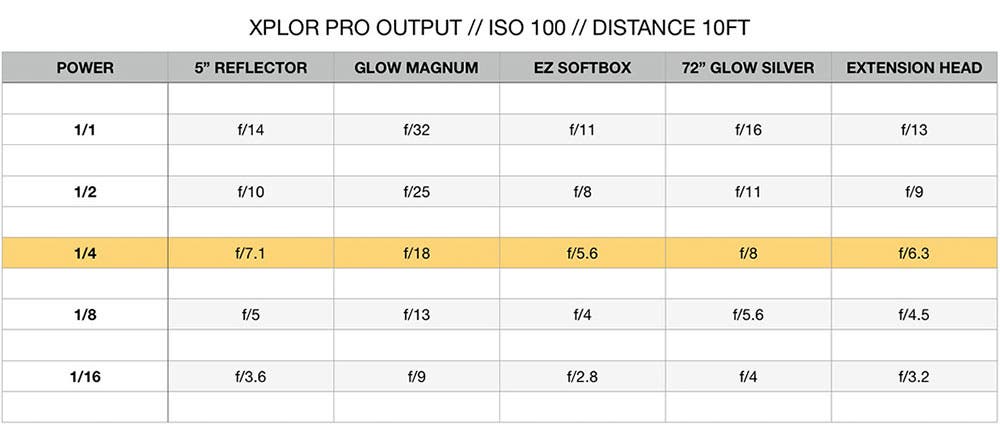
Recycle time – ideally instant, as in 1/5th a second or faster, though I find the ½ second recycle time of the XplorPro at half power sufficient in most scenarios. This isn’t about a “spray-n-pray” machine gunning, but about having a strobe ready to fire off a burst in succession, and catch the transition of expression, or subtle physical gesture of the subject. It’s often in these spontaneous moments that we catch something unguarded and natural.
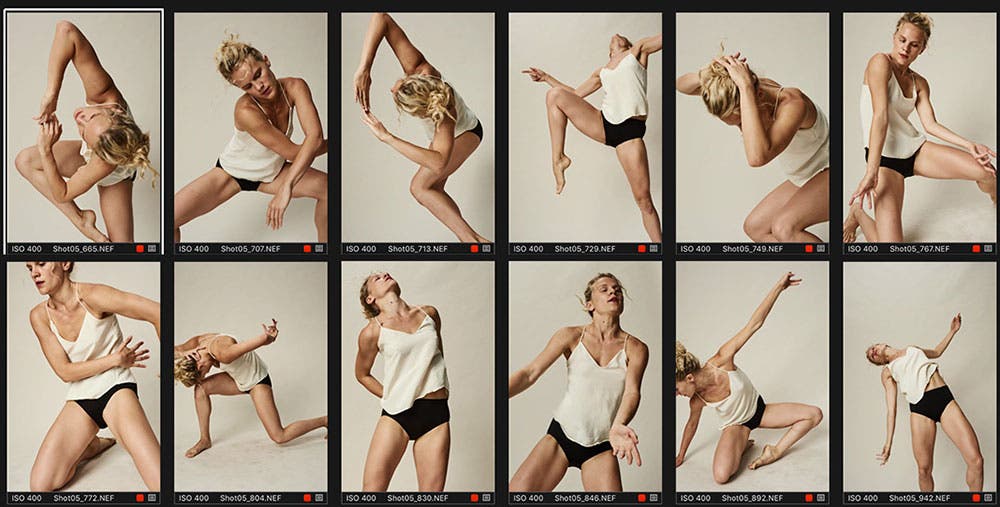

Historically — in the case of the Streaklight, the XplorClassic, and the eVOLV — the sweet spot has been around ¼-3 power. With the XplorPro, it’s comfortably ¼ +3 power, a gain of 2/3rds a stop of intensity, while sustaining the same tempo. Your process and needs may vary from shoot to shoot, and you’ll adjust accordingly, but the XplorPro’s “baseline” is really forgiving. So forgiving in fact, that at 1/16th power and below, recycle times are fast enough to make animated GIFs from the images…
I was recently commissioned for a commercial job, a classic and widely beloved sneaker company, with an emphasis on youthful energy and candid, unguarded moments. The creative brief included the desire to capture a handful of GIFs and, shooting at 1/16th and 1/32nd power, using the standard 5″ reflector, we consistently clogged the camera’s buffer with raw files while the lights didn’t miss a beat. Many of the animations consist of about 24 frames fired off in rapid succession, with no shift in exposure, and we were able to capture the images at a clean ISO160, f/8, 1/200 sec.
At 1/32nd power, the XplorPro’s flash duration is so fast, tiny details like ends of hair, shoelaces and wardrobe edges are tack sharp:
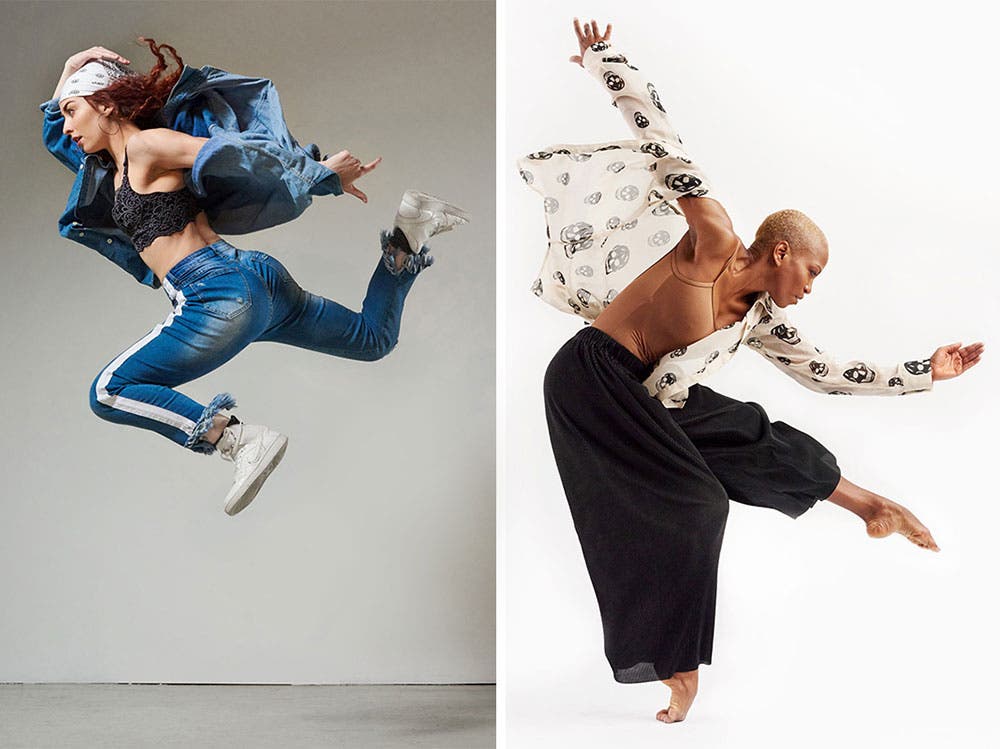
From here you can play with the modifier used for your key light to move the workflow in a direction you like — you can, for instance, bring in a specular, punchy modifier like the excellent Glow Magnum, replacing the reflective/diffused umbrella — and pick up 2 and 1/3rd stops of exposure latitude. It’s here that your skills in navigating your client’s needs and style with the optimal light modifier will become crucial.
Now you can decide to either keep the same pace, but lower your ISO for cleaner output; or keep the ISO fixed but pick up the pace. Your client’s needs should guide these decisions, and the gear chosen is secondary, and serves the desired outcome. That said, I’ve found it helpful to get to a place where I’m happy with the work and then share a preview with the client — good photos can be a very compelling advocate for your direction.
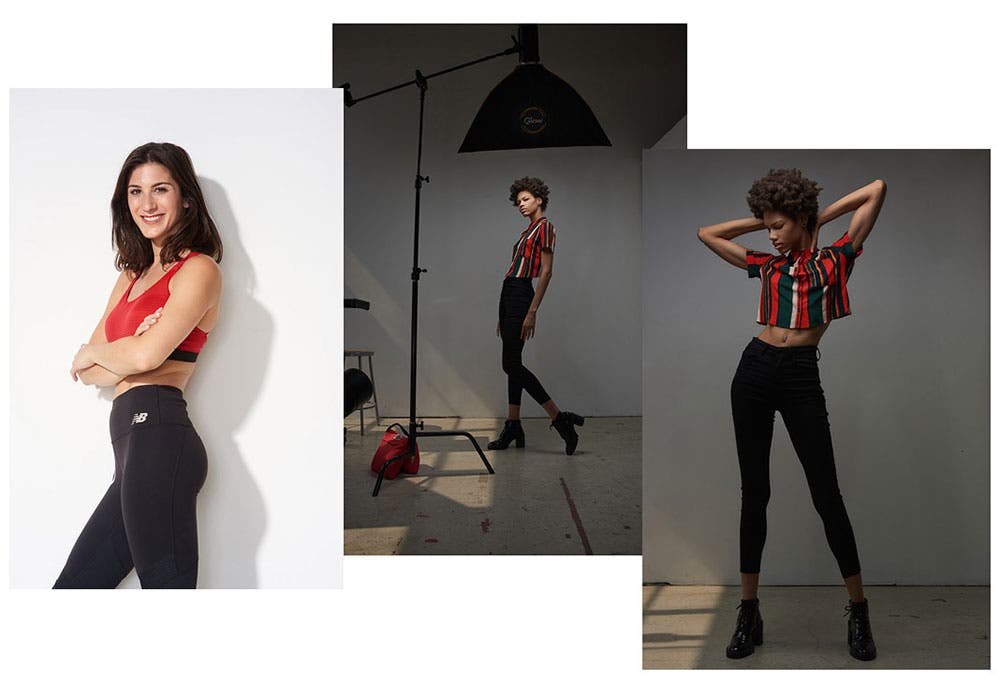
The XPLOR Pro does still life:
Having seen how the Pro handles a more demanding studio scenario — full length, rapid movement — now we can see how it handles still life, where recycle time is (usually) less of an issue. Instead of an emphasis on sustained tempo, still life demands the cleanest output — using the lowest ISO and greatest dynamic range .
This is incidentally where you might choose to invoke Color mode — COLOR ON in the C.fn menu — to ensure color works within a tight orbit of 5600K at every power setting.
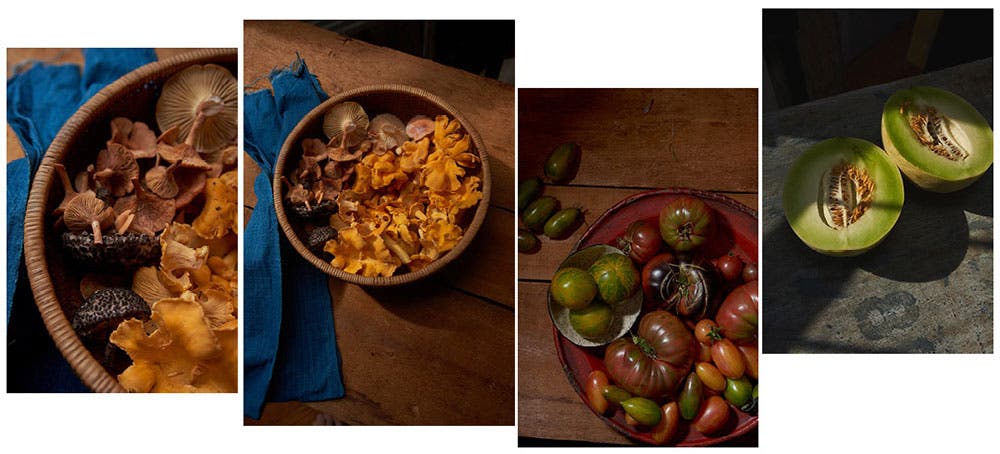
Given the more relaxed pacing of still life, the condensed distance between light and subject, the Pro delivers an impressive ISO 64, f/13, 1/160th, at full power, even with use of the extension head, which reduces output by 1/3rd stop. These figures are derived with Xplor Pro about five feet from the subject, shooting through diffusion (either a hanging sheet of frosted acrylic, or the double diffusion of a small Glow EZ Lock softbox).

With still life jobs, I highly suggest you consider using the Pro in conjunction with the AC adapter and, now available, the extension head for this sort of thing. The extension head allows you to more easily boom the light or lower it to meet the table surface; and the AC adapter puts your mind at ease, allowing for things like minute, refined styling to happen on a natural timeline, so that you don’t need to carry a spare battery.
About that new extension head:
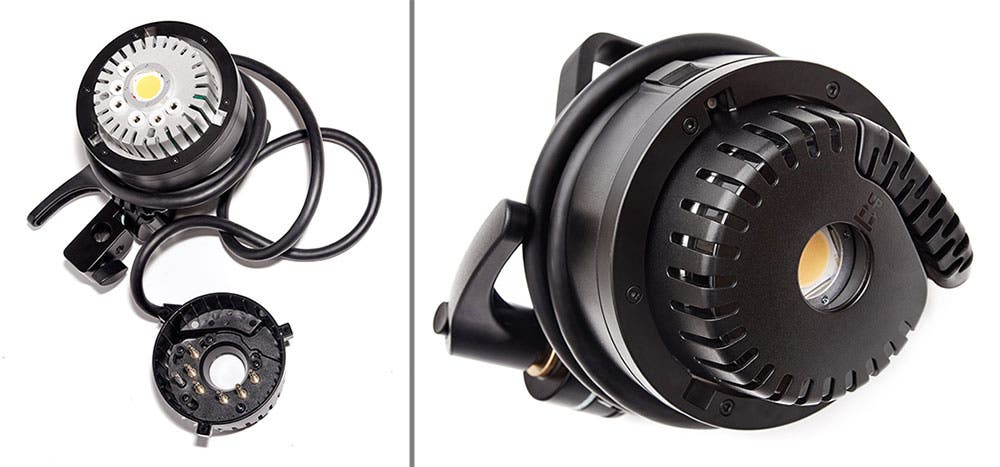
At the core of why I feel the Flashpoint system presents the greatest value are their innovations like the extension head. With it, you can covert a battery driven monolight to a pack and head like setup. Doing so puts the bulk of the light’s weight low, and the bulb & head become comparatively very light and easy to boom. Even on a compact stand like the Manfrotto Nano, as shown below, the pack/battery offsets the weight of the head enough that the stand becomes very stable. If, as I often do, you pack a hybrid kit stand and c-stand arm and knuckle to work on location, this setup is key to putting your mind at ease when booming the XplorPro:
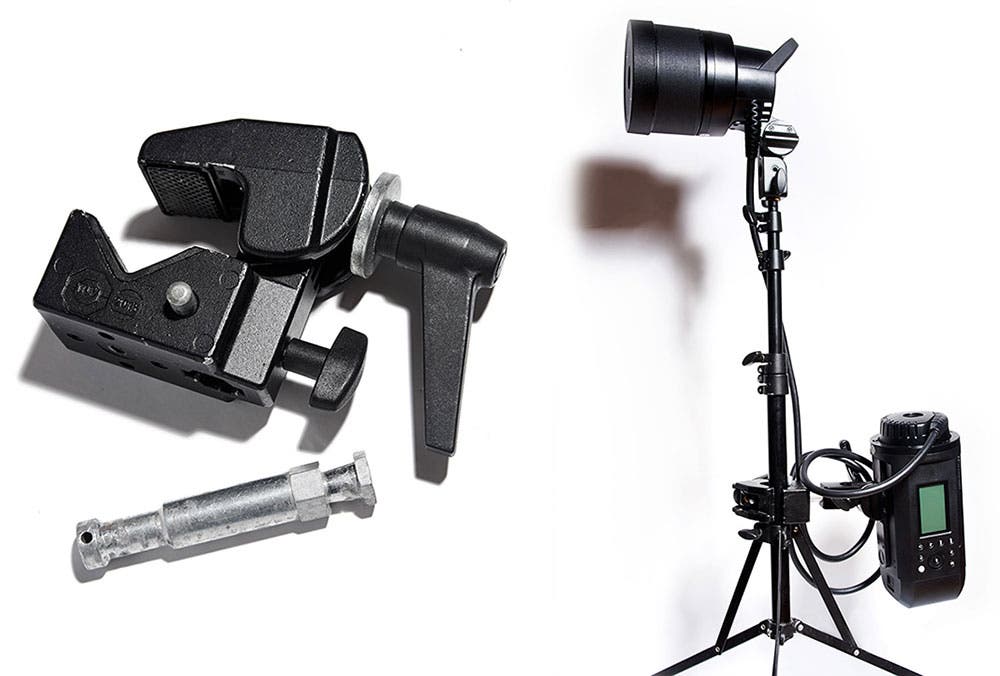
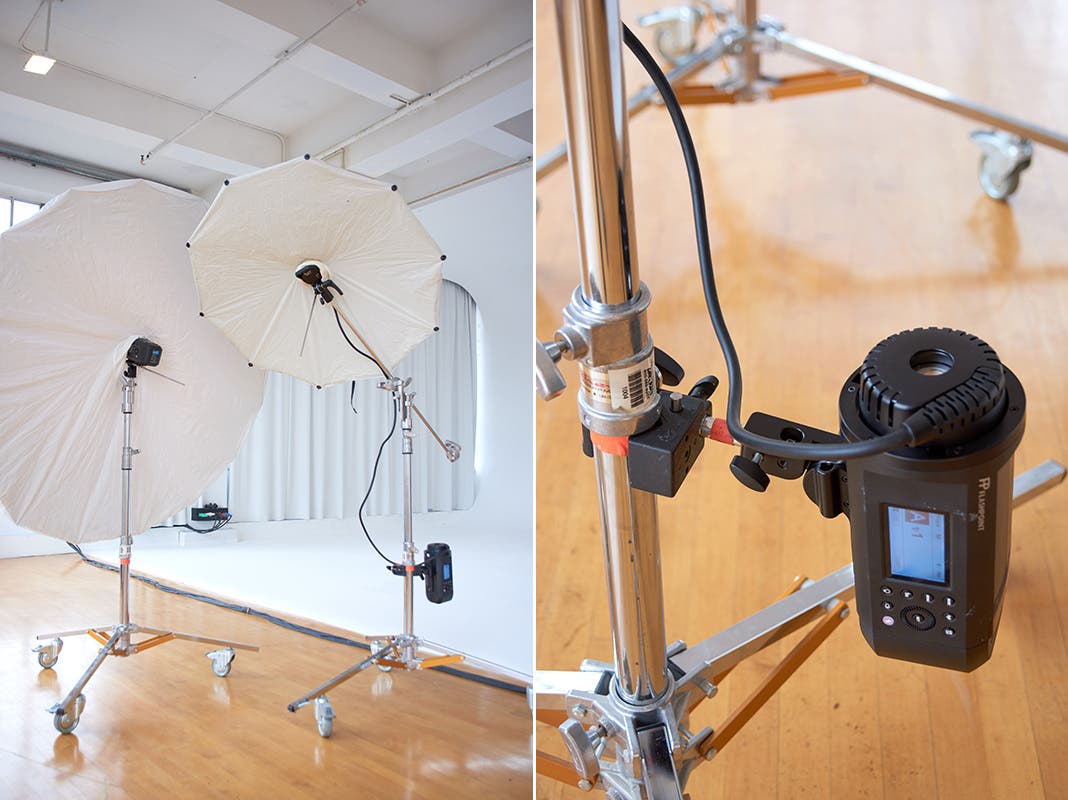
One unfortunate caveat of the new extension head — it both does not ship with a bag, and the bag which shipped with the XplorClassic’s extension head doesn’t totally work with it. In a pinch, the old bag is workable, but certainly not ideal.
XPLOR Pro, packed to go:
At the center of my location gear strategy is the hope that I can carry lighting and my main camera body in a single roller case as often as possible. The XplorPro’s new streamlined design, with a reflector that fits flush with the body, makes putting two into a roller case a no brainer — and leaves room enough for additional gear!
Here’s the breakdown of what I use on assignments big and small:
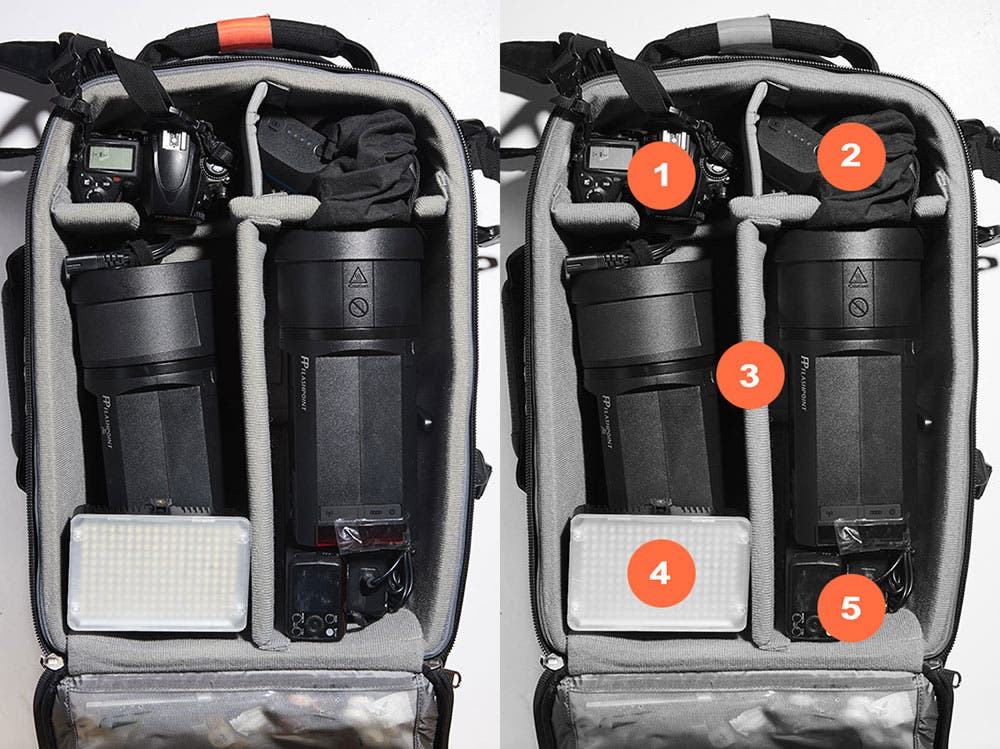

The XplorPro’s slim design allows me to leverage an unprecedented 1600ws across 4 sources in a single rollercase — two 600ws Xplors leave enough room for a pair of 200ws eVOLVs, the extension head for the pro and twin bracket for the eVOLVs fitting in a small over-the-shoulder bag.
Toward the future:
The Flashpoint family of lights started well and continues to mature, on a pretty aggressive upward path of refinement and innovation. In just the past few months, we’ve seen released the XplorPro’s smaller companion, the Xplor400 Pro, as well as extension heads for both the eVOLV and XplorPro. As of this writing, a firmware update adds the option to select .1 stop adjustments to the R2Pro and XplorPro.
With improved recycle times, better color stability, and a refined tube, it is clear that the Xplor design team are looking to occupy a space long assumed as the domain of premium brands. They are listening to feedback and hustling to close performance gaps.
I’d love to see some additional upgrades in the future, as well. Namely, a better umbrella mount, a 1200ws bitube option, a shoulder bag for the extension head, a shorter flash duration at higher output, an “action” mode, daylight balanced LED modeling light.
Overall, the XplorPro is a superbly competent tool, and to my mind, ushers in a new standard for what a battery driven monolight can be.
Feature photo by Jim Lafferty



